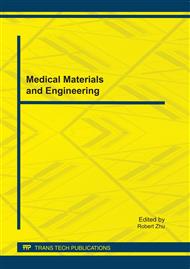[1]
S Rybka, K Kailasapathy, The survival of culture bacteria in fresh and freeze-dried AB yoghurts, Aust J Dairy Tech. 50 (1995) 51–57.
Google Scholar
[2]
M Kalliomaki, S Salminen, H Arvilommi, P Kero, P Koskinen, E Isolauri, Probiotics in primary prevention of atopic disease: a randomised placebo-controlled trial, Lancet. 357 (2001) 1076–1079.
DOI: 10.1016/s0140-6736(00)04259-8
Google Scholar
[3]
J M Saavedra, N A Bauman, I Oung, J A Perman, R H Yolken, Feeding of Bifidobacterium bifidum and Streptococcus thermophilus to infants in hospital for prevention of diarrhoea and shedding of rotavirus, Lancet. 344 (1994) 1046–1049.
DOI: 10.1016/s0140-6736(94)91708-6
Google Scholar
[4]
S Hekmata, D J McMahona, Survival of Lactobacillus acidophilus and Bifidobacterium bifidum in Ice Cream for Use as a Probiotic Food, J DAIRY SCI. 75 (1992) 1415-1422.
DOI: 10.3168/jds.s0022-0302(92)77895-3
Google Scholar
[5]
Y. Shimakawa, S Matsubara, N Yuki, M Ikeda, F Ishikawa, Evaluation of Bifidobacterium breve strain Yakult-fermented soymilk as a probiotic food, INT J FOOD MICROBIOL. 81 (2003) 131-136.
DOI: 10.1016/s0168-1605(02)00224-6
Google Scholar
[6]
S Meance, C Cayuela, P Turchet, A Raimondi, C Lucas, J MAntoine, A Fermented Milk with a Bifidobacterium Probiotic Strain DN-173 010 Shortened Oro-Fecal Gut Transit Time in Elderly, Microb Ecol Health Dis. 13 (2001) 217-222.
DOI: 10.1080/089106001753341291
Google Scholar
[7]
J Matto, H L Alakomi, A Vaari , K Virkajarvi, M Saarela, Influence of processing conditions on Bifidobacterium animalis subsp lactis functionality with a special focus on acid tolerance and factors affecting it. Int Dairy 16 (2006) 1029–1037.
DOI: 10.1016/j.idairyj.2005.10.014
Google Scholar
[8]
X C Meng, C Stanton, G F Fitzgerald, C Daly, R P Ross, Anhydrobiotics: The challenges of drying probiotic cultures Food Chem. 106 (2008) 1406–1416.
DOI: 10.1016/j.foodchem.2007.04.076
Google Scholar
[9]
R J Heckly, Principles of preserving bacteria by freeze-drying, Develop Indus. Microbiol. 26 (1985)379–395.
Google Scholar
[10]
M.B. Roberfroid.Prebiotics and synbiotics: concepts and nutritional properties. Br.J.Nutr.80(1998)197-202
DOI: 10.1017/s0007114500006024
Google Scholar
[11]
Q.Q Li, Q.H. Chen, H. Ruan, D.S. Zhu, G.Q.He. Isolataion and characterization of an oxygen, acid and bile resistant Bifidobacterium animalis subsp.lactis Qq08.J. Sci.Food and Agri.90(2010)1340-1346
DOI: 10.1002/jsfa.3942
Google Scholar
[12]
Samet-Bali, Olfa, Bellila, Amor, Ayadi, Mohamed-Ali. A comparison of the physicochemical, microbiological and aromatic composition of traditional and industrial leben in Tunisia.Int J. Dairy Tech. 63(2010)98-104.
DOI: 10.1111/j.1471-0307.2009.00546.x
Google Scholar
[13]
O. N. Donkora, A. Henrikssonb, T. Vasiljevica, N.P. Shah, Effect of acidification on the activity of probiotics in yoghurt during cold storage, 16 (2006) 1181-1189.
DOI: 10.1016/j.idairyj.2005.10.008
Google Scholar
[14]
A.S. Akalin, S. Fenderya, N. Akbulut. Viability and activity of bifidobacteria in yoghurt containing fructooligosaccharids during refrigerated storage. Int J.Food Sci, 39(2004)613–621.
DOI: 10.1111/j.1365-2621.2004.00829.x
Google Scholar
[15]
O.N. Donkor, A. Henriksson, T. Vasiljevic, N.P. Shah. Effect of acidification on the activity of probiotics in yoghurt during cold storage. Int Dairy. 16 (2006) 1181–1189
DOI: 10.1016/j.idairyj.2005.10.008
Google Scholar
[16]
J.L. Steele,G.Unlu. Impact of lactic acid bacteria on cheese flavor development. Food Tech. 46 (1992)128–136.
Google Scholar


